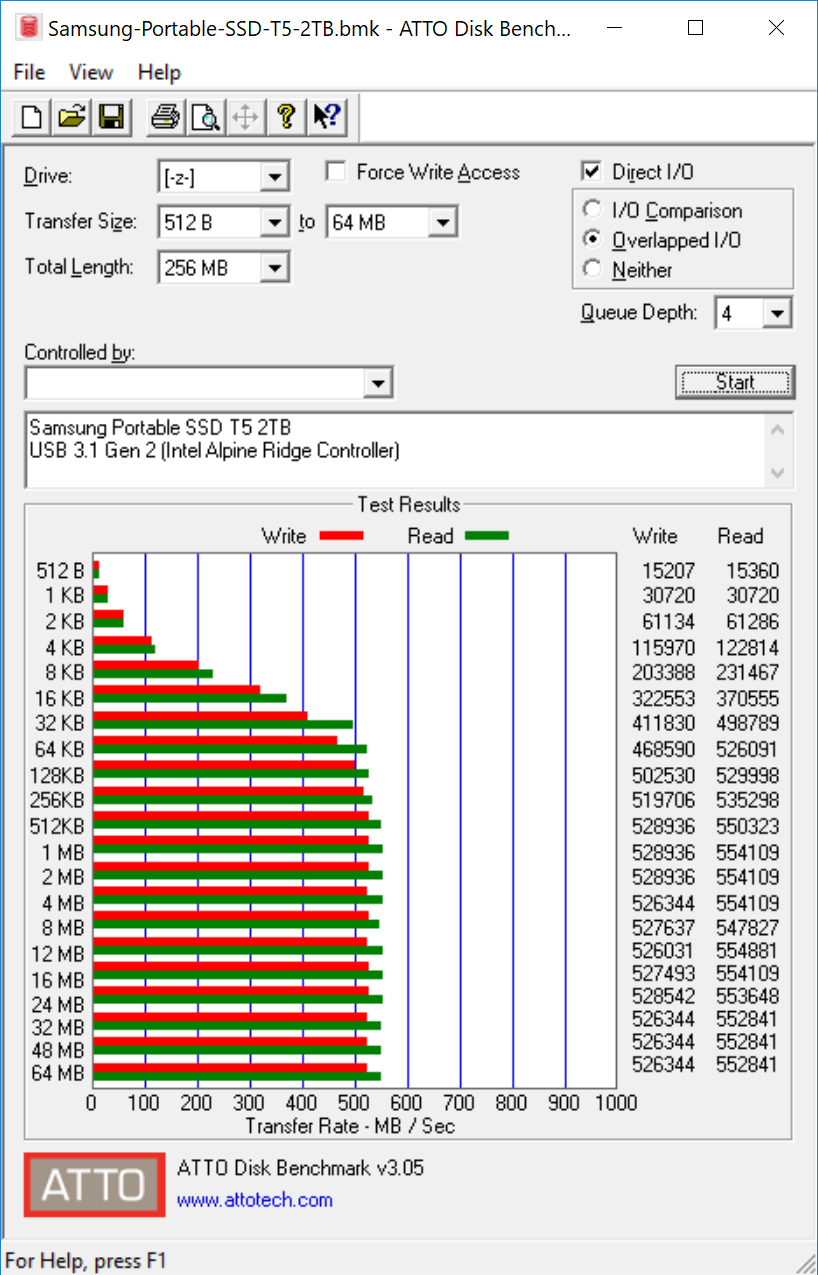

- SAMSUNG T5 SSD CRYSTAL DISKMARK INSTALL
- SAMSUNG T5 SSD CRYSTAL DISKMARK PORTABLE
- SAMSUNG T5 SSD CRYSTAL DISKMARK ANDROID
- SAMSUNG T5 SSD CRYSTAL DISKMARK PRO
- SAMSUNG T5 SSD CRYSTAL DISKMARK SOFTWARE
SAMSUNG T5 SSD CRYSTAL DISKMARK ANDROID
If the app is not installed, you will see a read-only partition with the setup files for the three platforms we mentioned above (the Android version is just a text file with a link to the location where you can download the app). The device will need to have the SamsungPortableSSD application installed on it for you to unlock the drive’s contents. If you do set a password, however, you need to enter it every time you plug the drive in to a host device. If you ignore this, you can use the Samsung T5 like any other drive.
SAMSUNG T5 SSD CRYSTAL DISKMARK INSTALL
When you install and launch the app, you are prompted to set a password for the drive. The drive contains setup files for an application called SamsungPortableSSD for Windows, Mac, and Android, whose primary function is to facilitate password-based hardware encryption.
SAMSUNG T5 SSD CRYSTAL DISKMARK SOFTWARE
Unlike some other vendors, the bundled software is pretty barebones, and though we like that for the most part, Samsung might have taken this too far. Our 500GB review unit had roughly 465GB of space available for use. Like many other external drives, the Samsung T5 comes pre-formatted as exFAT. Sequential and random read/ write speeds as recorded by CrystalDiskMark with queue depth set to 32.
SAMSUNG T5 SSD CRYSTAL DISKMARK PRO
Our real-world experience was equally good, and we were able to copy a 5.2GB file from the SSD on a 13-inch 2016 MacBook Pro laptop to the Samsung T5 in 10 seconds. With a queue depth of 32, we got random read and write speeds of 150.7MBps and 147.2MBps respectively, which are great. In CrystalDiskMark v6.0.0, we recorded sequential reads of over 550MBps and sequential writes of 499.9MBps, with the former topping Samsung’s own claims.

We connected the Samsung T5 to a HP Spectre 13 laptop using the bundled Type-C to Type-C cable to run some benchmarks and find out if it lives up to its claims. The Samsung T5 is rated for transfer speeds of up to 540MBps, a 20 percent bump on paper compared to the T3. Of course the actual speeds you can expect to get are much lower. 2 connectivity, which offers theoretical speeds up to 10Gbps double of what the T3 supported with USB 3.1 Gen. The Samsung T5 has support for USB 3.1 Gen. Samsung T5 specifications, features, and performance In the box, you get the Samsung T5 SSD, a manual, and USB 3.1 Gen 2 Type-C to Type-C as well as Type-C to Type-A cables, which is great. The two-colour finish on the Samsung T3 has given way to two distinct aluminium finishes – Alluring Blue on the 250GB and 500GB capacities, and Deep Black for the 1TB and 2TB models. The drive is rated for use between 5☌ and 35☌, with humidity between 10 and 80 percent. Samsung says it can handle drops of up to 2 meters, though we weren’t tempted to test this claim. You won’t have any trouble fitting it in your pocket. It’s a tiny bit smaller than most credit and business cards, but a little bit thicker than the average smartphone. Samsung T5 design and box contentsĪt 51g and 74×57.3×10.5mm (3.0×2.3×0.4 inches), the Samsung T5 is practically identical to its predecessor – the T3 – in terms of size and weight. Does the Samsung T5 live up to that claim? Let’s find out in our review.
SAMSUNG T5 SSD CRYSTAL DISKMARK PORTABLE
While we might not come anywhere near those theoretical speeds just yet, today we have a drive that aims to offer the fastest portable SSD experience till date. 2, which theoretically offers speeds of up to 10Gbps – that’s beginning to change. With the introduction of USB 3.1 – specifically USB 3.1 Gen. You could justify this a bit because of the higher speed that you get, but that has traditionally been a problem as well. While low-capacity SSDs have become accessible, the capacities of external drives on average tend to be a lot higher, which means you are looking at pretty high costs of entry. While prices of internal SSDs have come down to a point where many can afford to buy a machine where at least part of the storage is solid-state, most external storage solutions still tend to involve hard disks.
If you are someone who’s made the switch from a hard disk to a SSD as your primary storage medium, the difference in performance can be like night and day. GPUs continue to evolve at a fast pace, but the improvements in the performance of most other PC components has been incremental at best – that’s if you don’t count SSDs. If you use a computer, perhaps the most significant development in the past few years has been the rise of solid-state drives aka SSDs.


 0 kommentar(er)
0 kommentar(er)
